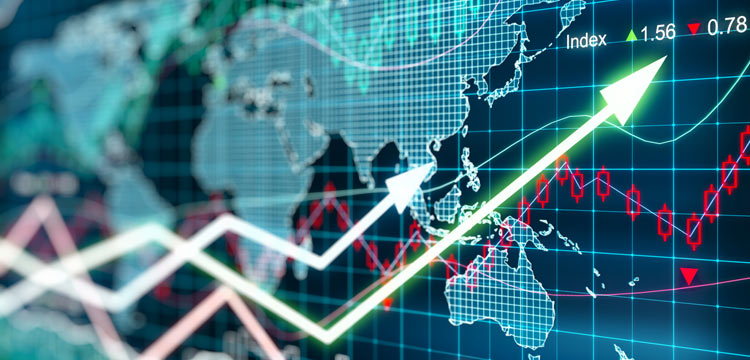On July 10, 2025, global financial markets continue to walk a tightrope between optimism and caution. While U.S. equities remain near historic highs, commodity prices reflect deeper tensions – both economic and geopolitical. Investors are navigating this mixed environment by rotating selectively, hedging more actively, and watching key policy signals closely.
In the equity space, U.S. indices added between 0.5% and 1% in Wednesday’s session, with the S&P 500 returning to levels just shy of its all-time high. This move was underpinned by mounting expectations of monetary easing. According to the CME FedWatch tool, markets are now pricing in a 70% probability that the Federal Reserve will begin cutting interest rates in September. Dovish commentary from several FOMC members and softer labor market data have helped reinforce this view.
However, Thursday morning brought a modest pullback in U.S. equity futures, down around 0.3%. This has reverberated across global markets, dampening enthusiasm in both Asia and Europe. Japan’s Nikkei 225 index fell by 0.45%, while Hong Kong’s Hang Seng rose slightly by 0.52%, reflecting the diverging sensitivities of local markets to dollar policy and regional demand. In Europe, the mood is similarly tempered, as investors await fresh inflation readings and clearer policy signals from the ECB, which has entered a more delicate phase of rate calibration after its June cut.
Meanwhile, commodity markets are signaling more complex cross-currents. Brent crude oil is holding firm just below the $70 mark, trading at $69.91 per barrel as of this morning. This price level carries both psychological and technical weight. Importantly, it comes despite U.S. crude inventories rising by an unexpected 7 million barrels last week – sharply higher than the expected draw of 1.7 million barrels. The resilience in oil prices suggests that supply-side concerns, such as new OPEC+ policy risks or Middle East tensions, continue to outweigh near-term data noise. Technically, a key upside gap remains near $71.50 – a level many traders are watching as a near-term target.
Gold prices are offering a different kind of message. The metal has been moving sideways for several weeks, with futures currently trading at $3,321.90 per ounce. The price is stuck within a well-defined range between $3,300 and $3,330. This reflects uncertainty more than conviction. In times of macro ambiguity- when monetary policy is in transition and inflation expectations are unclear – gold tends to stall rather than trend. However, traders are actively exploiting this range: buying near the lower band and taking profits just below resistance. Longer-term investors are mostly on hold, waiting for either a breakout or a clearer inflation narrative to emerge. Tomorrow’s U.S. Consumer Price Index report may offer that catalyst.
Natural gas markets are behaving with even more caution. U.S. natural gas futures climbed 1.95% to $3.246 per MMBtu after dipping below $3.20 earlier in the week. However, the underlying fundamentals remain bearish. Domestic production is robust, inventory levels are high, and export flows have been somewhat erratic amid shifting global demand. A technical gap from May, just above $3.10, remains in play, and unless weather patterns or geopolitical events intervene, the downside risks have not been fully neutralized. Traders who exited long positions earlier in the week, after the break below the $3.35 technical threshold, managed to preserve gains and avoid whipsaw losses. For now, the market is in cash-heavy mode, waiting for a more favorable reentry point.
These cross-asset dynamics – rising equities, resilient oil, directionless gold, and pressured gas – reflect a broader macro environment defined by transition. Investors are no longer driven by pure optimism, nor are they panicked by systemic threats. Rather, they are watching central banks closely, recalibrating exposures, and emphasizing liquidity and optionality.
What does this mean for forward-looking portfolios? The key lies in tactical balance. Equities still offer upside as long as rate cuts remain in play, but valuations are stretched, and momentum is fragile. Commodities are diverging – crude remains supported, but natural gas is vulnerable, and gold is neutral for now. For traders, this is a market of range setups and short-term breakouts. For investors, it’s a moment to focus on risk-adjusted entries, and to avoid overleveraging on any single theme.
The next 48 hours will be critical. U.S. inflation data, followed by earnings season kickoff next week, will determine whether this week’s strength can evolve into a broader trend – or whether the summer rally risks becoming another failed breakout.
For now, the global economy remains in a holding pattern. And in markets like this, discipline and preparation matter more than ever.
Sources :
- CME FedWatch Tool;
- U.S. Department of Energy / EIA
- TradingView and Investing.com
- Yahoo Finance / Bloomberg
- Reuters & CNBC
- LME & ICE:
- European Central Bank (ECB)
- U.S. Bureau of Labor Statistics
Important Disclaimer: The content of this article is provided for informational and educational purposes only. It reflects the author’s opinion based on information available at the time of publication, which may become outdated. This content does not constitute personalized investment advice, a recommendation to buy or sell, and does not guarantee future performance. Markets carry a risk of capital loss. The investor is solely responsible for their decisions and should consult an independent professional advisor before any transaction. The publisher disclaims all liability for decisions made based on this information.

